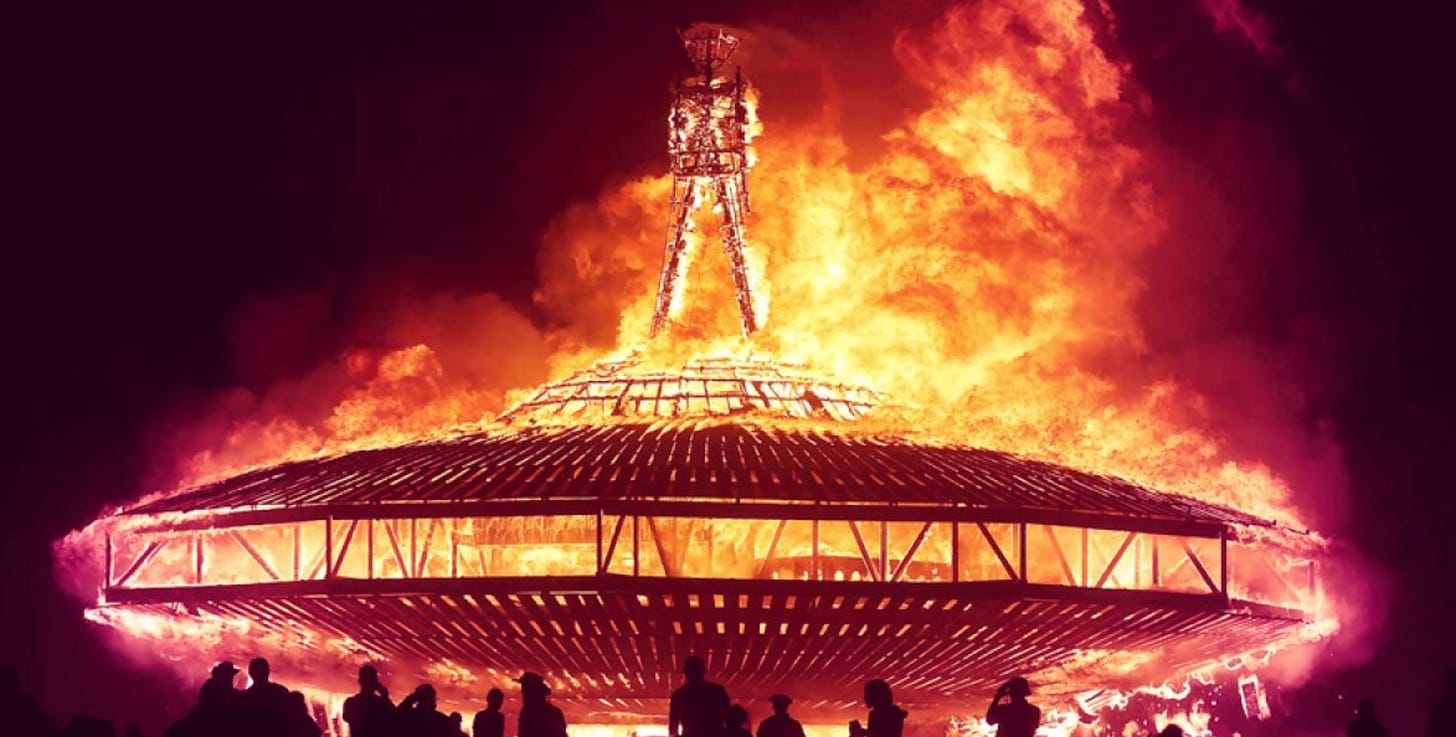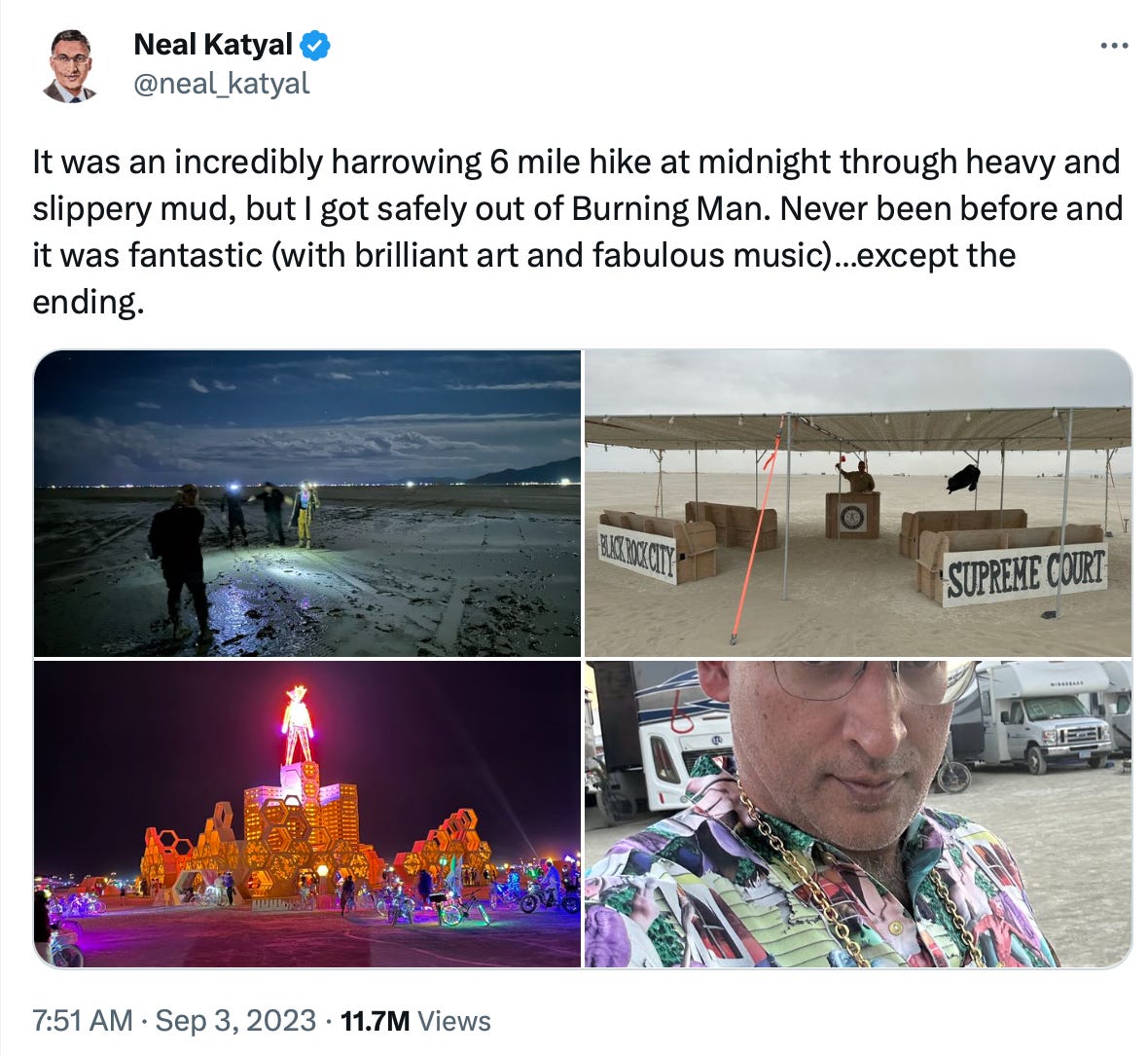You are using an out of date browser. It may not display this or other websites correctly.
You should upgrade or use an alternative browser.
You should upgrade or use an alternative browser.
Politics is Downstream From Culture
- Thread starter GURPS
- Start date
20 Movies That Were Once Considered Masterpieces, but No Longer Hold Up
By this point in time, there are thousands of films in existence for audiences to relish in. Some of these films remain timeless classics due to their exquisite plots, incredible performances, and universally palatable themes. There are also films that, while critically acclaimed during their initial release, are no longer fan-favorites for various reasons. Here are twenty movies that were once considered masterpieces, but no longer hold up.
Breakfast at Tiffany’s (1961)
Audrey Hepburn can do no wrong, and Breakfast at Tiffany's is a testament to that. Her most iconic role to date, Hepburn's Holly Golightly goes through life seemingly carefree as she sports Givenchy attire and dates older men to sustain her socialite lifestyle. In reality, Holly is filled with existential dread about where she belongs in life, which catches the interest of her new upstairs neighbor, Paul Varjak.
While Paul and Holly's romance is chaotic through and through, it isn't the most problematic aspect of the film. Breakfast at Tiffany's perpetuates a racist characterization through Mickey Rooney's Mr. Yunioshi makeup, exaggerated accent, and the character's overall personality make Breakfast at Tiffany's an offensive film.
Sixteen Candles (1984)
This John Hughes movie should not be directed toward younger audiences (or any audience) at all. Sixteen Candles contains sexual assault, misogyny, with its protagonist, Samantha, being objectified and demeaned by just about every male character in the movie. Samantha didn't need to pick between love interests Jake and Ted; she needed a fresh start away from such morally-flawed people. Sixteen Candles is a cautionary tale for the foundations of abusive relationships and obsessive individuals. Not even Molly Ringwald's charismatic performance can make Sixteen Candles hold up nowadays.
Grease (1978)
Grease is a timeless classic for its dance numbers, production value, and characters such as Rizzo, who was ahead of her time with her views on gender and society. Then there’s its protagonists, Danny and Sandy. Danny and Sandy seem to be in love, but the ways they both refer to each other to their respective friend groups are very different. While Sandy praises Danny for being a kindred soul who loves her, Danny describes Sandy as a fun, yet meaningless, summer fling.
The rest of the film doesn’t really improve on this disparity, as Danny at first rebuffs Sandy in front of his friends, then tries to win her over once again, and then tries to force himself on Sandy during a date. Just when Danny seems to have learned his lesson by telling the T-Birds, he’s going to make a genuine change for Sandy; it’s Sandy who changes her appearance and personality entirely to match Danny's. Sure, there’s the iconic dance number immediately after where Sandy says she needs Danny to shape up to be the ideal partner for her… still, Sandy is the only character that makes a drastic change for the sake of the relationship.

I looked into it, and am happy to report there are no credible firsthand reports of people dying from ebola or any other tropical disease, and though travel to the festival site has, in fact, been closed off, many attendees are communicating with the outside world and seem fine, if disappointed and greatly inconvenienced.
According to the lore, in 1986, two progressive San Fransisco men, presumably under the influence of some substance or other, conceived and carried out plan to burn an eight-foot tall human-shaped sculpture down at San Francisco’s Baker Beach. A small crowd gathered to watch the bizarre event unfold, and the first annual Burning Man accidentally occurred.
What you will not find, not anywhere, is any discussion of the why. Why burn a pretend human? What, or who, it is being sacrificed to? To ask questions is to miss the point, to destroy the ineffable, chaotic, bohemian insubstance of partying without a reason. Describing it also destroys it.
Since then, the party moved to the middle of Nowhere in Nevada’s Black Rock desert, and the number of attendees has increased (over 70,000) along with the size of the wicker human sacrifice and the event’s length (it’s now nine days long).
While an entire pagan folklore has emerged over the years, with its own insider vocabulary, temple of worship, ever grander and more bizarre costume rituals, some of the trappings of modernity have crept in. Entry tickets cost $425, over $500 after taxes and fees (subsidized low-income tickets are available for a bargain $210).

What the festival does not offer, however, are upscale conveniences. But for a few high-net-worth folks in RVs (rental cost $150,000 and up), attendees go showerless, use portable restrooms, and prepare food in less-than-perfectly sanitary desert conditions.

So, folks can be forgiven for assuming that a perfect place for an ebola outbreak would be the harsh conditions of the Nevada desert and the melting pot of 70,000+ stinky attendees-under-the-influence. But what actually happened is, it started raining, and Burning Man got a lot less ‘burning’ and got a lot more bogged down in the mud, which apparently has become a sludgy buzzkill.
Mud Man!
Here’s the New York Times’ headline, as the problem started:

Yesterday a variety of media responded to the internet rumors of Ebola outbreak, but I agreed most with Business Insider’s headline. If there isn’t a squelchy infectious outbreak, there very well soon could be:

Mud Man is the great equalizer. While attendees who were not completely invested in Burning Man’s radical self-reliance values struggled to find ways to get themselves out of the slop and back to civilization, even celebrities were forced to trudge shoulder-to-shoulder with regular folks through the pasty, damp, ankle-deep soft clay.
Here’s a video clip of comedian Chris Rock hiking out of Burning Man and begging a ride in a pickup:

Other attendees who hiked out described surviving harrowing ordeals in the wet desert. While they had expected to rough it to some extent, they weren’t quite expecting to get their hands, feet, legs, arms, noses, and personal areas dirty.
The mud was just too much, dude.

So that’s it for the Mud Man, I mean the Burning Man report. Their access road is scheduled for re-opening tomorrow. We’ll see what happens.

☕️ MUD MAN ☙ Labor Day, September 4, 2023 ☙ C&C NEWS 🦠
Happy Labor Day, C&C! Today: has Burning Man mysteriously become an Ebola Hot Spot?; major moves in the proxy war; and climate consensus gets shredded.
A Zoomer Social Justice™ Journalist Explains the Difference Between 'Body Positivity' and 'Fat Liberation'
“Body positivity,” according to Josee Ng, refers to “a movement [to] fight appearance stereotypes and empower people to cherish the skin they wear, regardless of their size, shape, skin tone, or other physical characteristics that are deemed unattractive by society.”
“Fat liberation,” which Ng notes is often erroneously conflated with “body positivity,” refers to “a social movement that seeks to liberate obese people from the stigma and oppression toward overweight individuals by raising awareness among the general public.”
Let’s embark together on a Social Justice™ journey through the impenetrable morass to learn more.
Via Glam (emphasis added):
“Back [in 2010], the term ‘body positivity’ was interchangeable with the fat acceptance tag, as many larger fat plus-size people were using both hashtags at the same time,” plus-size blogger Stephanie Yeboah tells Vice. “Back then, it felt like a safe space for larger fat Black women and women of colour to celebrate our bodies, and speak about our traumas surrounding fatphobia and society policing our bodies. The movement in 2011 and 2012 was incredibly diverse, featuring an array of different shaped bodies, sexualities, identities, abilities and races. It felt safe.”…
Body positivity is often mistaken with fat liberation because it has roots in the fat acceptance movement. Fat acceptance activists who fight for fair treatment of people of size in healthcare, fashion, and employment are commonly referred to as champions of “fat liberation” or “fat rights,” Verywell Mind points out. “Fat people exist within every marginalized identity; NAAFA is uniquely positioned to work toward liberation for all,” writes NAAFA on its website.
Per an article published in the Canadian Medical Association Journal, people have a way of racializing obesity, and those with obesity are often seen as marginalized groups, even in a clinical setting. Few of us are immune to numerous embedded presumptions about fatness, considering we live in a society that glorifies shining examples of weight loss and body image restoration. To overcome the weight-based stigma, we need more than a set of do’s and don’ts.
